Main article: Southeast Alaska
Also referred to as the Panhandle or Inside Passage, this is the
region of Alaska closest to the rest of the United States. As such, this
was where most of the initial non-indigenous settlement occurred in the
years following the Alaska Purchase. The region is dominated by the Alexander Archipelago as well as the Tongass National Forest, the largest national forest in the United States. It contains the state capital Juneau, the former capital Sitka, and Ketchikan, at one time Alaska's largest city.[11] The Alaska Marine Highway provides a vital surface transportation link throughout the area, as only three communities (Haines, Hyder and Skagway) enjoy direct connections to the contiguous North American road system.[12] Officially designated in 1963.[13]Interior
Main article: Alaska Interior
Denali is the highest peak in North America.
Southwest
Main article: Southwest Alaska
North Slope
Main article: Alaska North Slope
The North Slope is mostly tundra peppered with small villages. The area is known for its massive reserves of crude oil, and contains both the National Petroleum Reserve–Alaska and the Prudhoe Bay Oil Field.[14] Barrow, the northernmost city in the United States, is located here. The Northwest Arctic area, anchored by Kotzebue and also containing the Kobuk River valley, is often regarded as being part of this region. However, the respective Inupiat of the North Slope and of the Northwest Arctic seldom consider themselves to be one people[citation needed].Aleutian Islands
Main article: Aleutian Islands
More than 300 small volcanic islands make up this chain, which
stretches over 1,200 miles (1,900 km) into the Pacific Ocean. Some of
these islands fall in the Eastern Hemisphere, but the International Date Line was drawn west of 180° to keep the whole state, and thus the entire North American continent, within the same legal day. Two of the islands, Attu and Kiska, were occupied by Japanese forces during World War II.Natural features
See also: Wildlife of Alaska
Augustine Volcano erupting on January 12, 2006
One of the world's largest tides occurs in Turnagain Arm, just south of Anchorage – tidal differences can be more than 35 feet (10.7 m).[15]
Main article: List of lakes in Alaska
Alaska has more than three million lakes.[16] Marshlands and wetland permafrost cover 188,320 square miles (487,747 km2) (mostly in northern, western and southwest flatlands). Glacier ice covers some 16,000 square miles (41,440 km2) of land and 1,200 square miles (3,110 km2) of tidal zone. The Bering Glacier complex near the southeastern border with Yukon covers 2,250 square miles (5,827 km2) alone. With over 100,000 glaciers, Alaska has half of all in the world.Land ownership
Alaska has more public land owned by the federal government than any other state.[17]
Of the remaining land area, the state of Alaska owns 101 million acres (41 million hectares), its entitlement under the Alaska Statehood Act. A portion of that acreage is occasionally ceded to organized boroughs, under the statutory provisions pertaining to newly formed boroughs. Smaller portions are set aside for rural subdivisions and other homesteading-related opportunities. These are not very popular due to the often remote and roadless locations. The University of Alaska, as a land grant university, also owns substantial acreage which it manages independently.
Another 44 million acres (18 million hectares) are owned by 12 regional, and scores of local, Native corporations created under the Alaska Native Claims Settlement Act (ANCSA) of 1971. Regional Native corporation Doyon, Limited often promotes itself as the largest private landowner in Alaska in advertisements and other communications. Provisions of ANCSA allowing the corporations' land holdings to be sold on the open market starting in 1991 were repealed before they could take effect. Effectively, the corporations hold title (including subsurface title in many cases, a privilege denied to individual Alaskans) but cannot sell the land. Individual Native allotments can be and are sold on the open market, however.
Various private interests own the remaining land, totaling about one percent of the state. Alaska is, by a large margin, the state with the smallest percentage of private land ownership when Native corporation holdings are excluded.
Climate
Main article: Climate of Alaska
Köppen climate types of Alaska.
Map depicting the climate zones of Alaska.
The climate of Anchorage and south central Alaska is mild by Alaskan standards due to the region's proximity to the seacoast. While the area gets less rain than southeast Alaska, it gets more snow, and days tend to be clearer. On average, Anchorage receives 16 in (41 cm) of precipitation a year, with around 75 in (190 cm) of snow, although there are areas in the south central which receive far more snow. It is a subarctic climate (Köppen: Dfc) due to its brief, cool summers.
The climate of Western Alaska is determined in large part by the Bering Sea and the Gulf of Alaska. It is a subarctic oceanic climate in the southwest and a continental subarctic climate farther north. The temperature is somewhat moderate considering how far north the area is. This region has a tremendous amount of variety in precipitation. An area stretching from the northern side of the Seward Peninsula to the Kobuk River valley (i. e., the region around Kotzebue Sound) is technically a desert, with portions receiving less than 10 in (25 cm) of precipitation annually. On the other extreme, some locations between Dillingham and Bethel average around 100 in (250 cm) of precipitation.[20]
The climate of the interior of Alaska is subarctic. Some of the highest and lowest temperatures in Alaska occur around the area near Fairbanks. The summers may have temperatures reaching into the 90s °F (the low-to-mid 30s °C), while in the winter, the temperature can fall below −60 °F (−51 °C). Precipitation is sparse in the Interior, often less than 10 in (25 cm) a year, but what precipitation falls in the winter tends to stay the entire winter.
The highest and lowest recorded temperatures in Alaska are both in the Interior. The highest is 100 °F (38 °C) in Fort Yukon (which is just 8 mi or 13 km inside the arctic circle) on June 27, 1915,[21][22] making Alaska tied with Hawaii as the state with the lowest high temperature in the United States.[23][24] The lowest official Alaska temperature is −80 °F (−62 °C) in Prospect Creek on January 23, 1971,[21][22] one degree above the lowest temperature recorded in continental North America (in Snag, Yukon, Canada).[25]
The climate in the extreme north of Alaska is Arctic (Köppen: ET) with long, very cold winters and short, cool summers. Even in July, the average low temperature in Barrow is 34 °F (1 °C).[26] Precipitation is light in this part of Alaska, with many places averaging less than 10 in (25 cm) per year, mostly as snow which stays on the ground almost the entire year.
| Location | July (°F) | July (°C) | January (°F) | January (°C) |
|---|---|---|---|---|
| Anchorage | 65/51 | 18/10 | 22/11 | −5/–11 |
| Juneau | 64/50 | 17/11 | 32/23 | 0/–4 |
| Ketchikan | 64/51 | 17/11 | 38/28 | 3/–1 |
| Unalaska | 57/46 | 14/8 | 36/28 | 2/–2 |
| Fairbanks | 72/53 | 22/11 | 1/–17 | −17/–27 |
| Fort Yukon | 73/51 | 23/10 | −11/–27 | −23/–33 |
| Nome | 58/46 | 14/8 | 13/–2 | −10/–19 |
| Barrow | 47/34 | 8/1 | −7/–19 | −21/–28 |
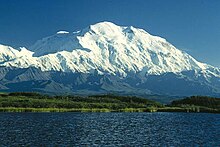
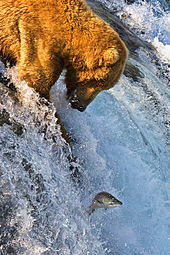
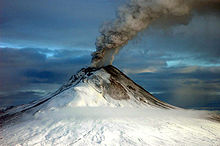
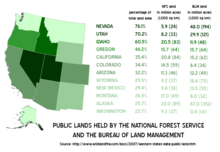

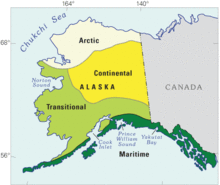
No comments:
Post a Comment